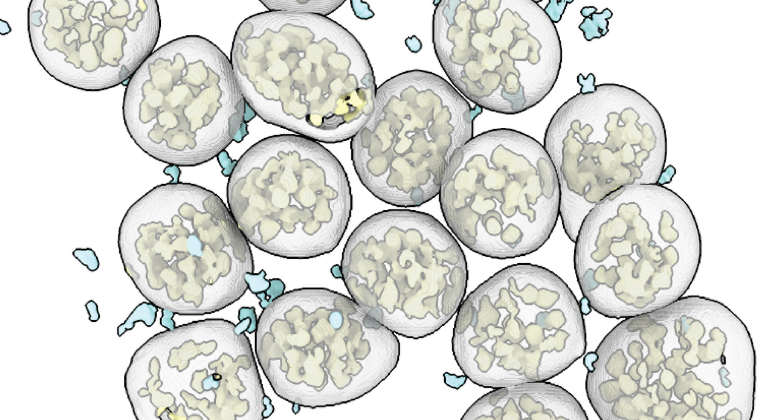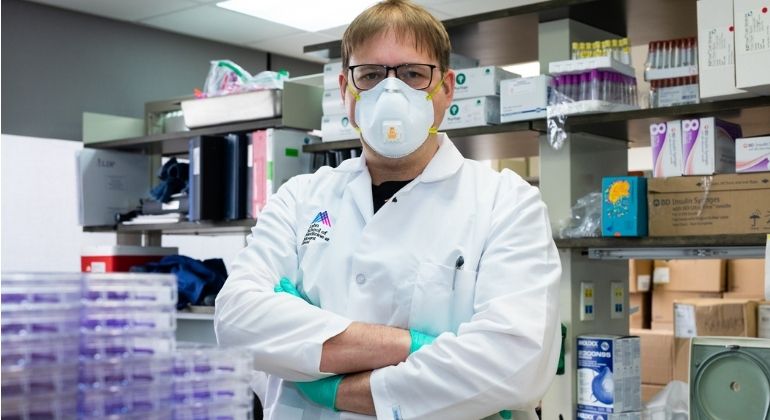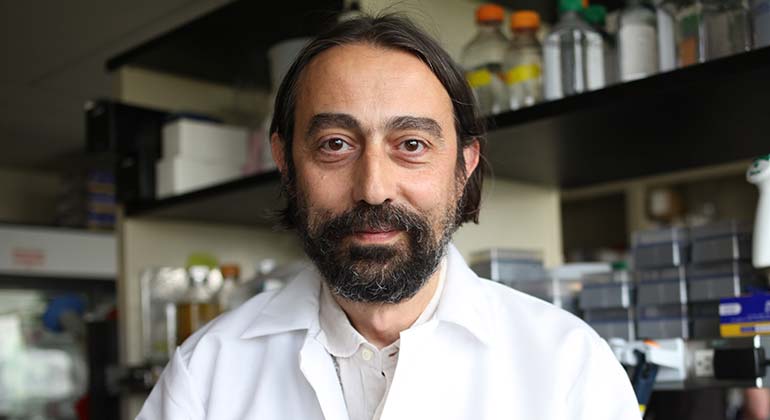Study Identifies 53 Approved Drugs that May Block Ebola Infection
Compounds May Keep Virus from Entering Cells; May Accelerate Drug Development
Researchers found 53 existing drugs that may keep the Ebola virus from entering human cells, a key step in the process of infection, according to a study led by researchers at the Icahn School of Medicine at Mount Sinai and the National Institutes of Health (NIH), and published today in the Nature Press journal Emerging Microbes and Infections.
Among the better known drug types shown to hinder infection by an Ebola virus model: several cancer drugs, antihistamines and antibiotics. Among the most effective at keeping the virus out of human cells were microtubule inhibitors used to treat cancer.
“In light of the historic and devastating outbreak of Ebola virus disease, there is an urgent need to rapidly develop useful treatments against Ebola infection, and our study results argue that repurposing existing drugs may be among the fastest ways to achieve this,” said lead author Adolfo García-Sastre, PhD, Director of the Global Health and Emerging Pathogens Institute within the Icahn School of Medicine at Mount Sinai. “Many of the compounds identified in this study promise to become lead compounds in near-future drug development efforts studies targeting this virus,” said Dr. García-Sastre, also the Fishberg Chair and Professor of Medicine (Infectious Diseases) within the School.
There is no approved treatment for Ebola virus infection, and the estimated mortality rate of the current Ebola outbreak is nearly 70 percent in many areas. Antibody-based therapy (e.g. ZMapp) has proven effective in animal studies, and has been used for the treatment of a few patients, but has not been confirmed in clinical trials. It is also expensive to make and in short supply. Ebola vaccine trials are getting underway as well, but vaccines will not be available for some time.
“NCATS is all about getting more treatments to more patients more quickly, and this is never more urgent than in the case of a public health emergency like Ebola,” said Christopher P. Austin, MD, Director of the National Center for Advancing Translational Sciences (NCATS), part of the NIH, which also led the study. “This remarkable team of scientists combined NCATS’ expertise in drug screening and development with Mt. Sinai’s expertise in Ebola virology to rapidly identifiy candidate treatments for Ebola infection.”
Specifically, the research team used a miniaturized, high-speed technology to screen through sample libraries of 2,816 compounds already approved by the US Food and Drug Administration for other uses. Their assay was designed to identify compounds that blocked the ability of the Ebola virus to enter and infect human cells by at least 50 percent.
While fully intact Ebola virus is a biosafety level (BSL) 4 pathogen and dangerous to work with, the team created a virus-like particle comprised of the Ebola proteins (glycoproteins and matrix proteins) that enable the virus to enter cells, but without many of the genes and proteins that make the virus deadly. When they inserted a fluorescent reporter protein in this virus-like shell, their test became capable of high-speed screening to see which drugs blocked the entry of Ebola-like viral particles into cells as measured by fluorescence. These Ebola mimics can be studied in a BSL-2 facility, making them much safer to work with.
The team’s screen yielded 53 drugs that block Ebola virus-like particles from entering human cells. Along with the drug types mentioned above, other categories that blocked viral entry included estrogen receptor modulators used against cancer and serotonin reuptake inhibitors used to treat depression. Some of the compounds had been shown by previous studies to counter Ebola lifecycle steps. Next steps include testing of the re-purposed drug candidates in animal studies to see if useful doses against the virus come with toxic side effects. If any of prove to be safe and effective, the “government may opt to deploy them in the outbreak areas,” said Dr. García-Sastre.
Carles Martínez-Romero, PhD, an instructor in the Department of Microbiology within the Icahn School of Medicine, also led the research at Mount Sinai. NCATS study authors were Wei Zheng, Jennifer Kouznetsova, Wei Sun, Gregory Tawa, Paul Shinn, Catherine Chen, Philip Sanderson, and John McKew. Aaron Schimmer of Princess Margaret Cancer Centre, part of the University Health Network in Toronto, was also a study author.
This work was supported by grants from NCATS and the NIH. The development of antiviral screen assays in Dr. García-Sastre’s lab was also supported by NIH grants (R01AI079110 and R01AI089539).
About the Mount Sinai Health System
Mount Sinai Health System is one of the largest academic medical systems in the New York metro area, employing 48,000 people across its hospitals and more than 400 outpatient practices, as well as more than 600 research and clinical labs, a school of nursing, and a leading school of medicine and graduate education. Mount Sinai advances health for all people, everywhere, by taking on the most complex health care challenges of our time—discovering and applying new scientific learning and knowledge; developing safer, more effective treatments; educating the next generation of medical leaders and innovators; and supporting local communities by delivering high-quality care to all who need it.
Through the integration of its hospitals, labs, and schools, Mount Sinai offers comprehensive health care solutions from birth through geriatrics, leveraging innovative approaches such as artificial intelligence and informatics while keeping patients’ medical and emotional needs at the center of all treatment. The Health System includes approximately 9,000 primary and specialty care physicians and 11 free-standing joint-venture centers throughout the five boroughs of New York City, Westchester, Long Island, and Florida. Hospitals within the System are consistently ranked by Newsweek’s® “The World’s Best Smart Hospitals, Best in State Hospitals, World Best Hospitals and Best Specialty Hospitals” and by U.S. News & World Report's® “Best Hospitals” and “Best Children’s Hospitals.” The Mount Sinai Hospital is on the U.S. News & World Report® “Best Hospitals” Honor Roll for 2024-2025.
For more information, visit https://www.mountsinai.org or find Mount Sinai on Facebook, Twitter and YouTube.






